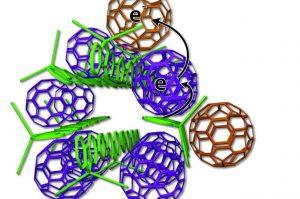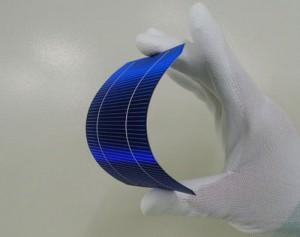The concept of imitating natural systems in the built environment is known as “Biomimicry,” and it holds great promise for advancements in many areas of technology, including solar. Several new, cutting edge research project are looking at biomimetic solutions to solar’s nagging problems.
Plastic Solar Panels Imitate Photosynthesis
A UCLA press release this week announced chemists there have developed a new solar cell design that is inspired by the way that plants generate energy through photosynthesis. The team’s full report, entitled Long-lived photoinduced polaron formation in conjugated polyelectrolyte-fullerene assemblies is available at the website of the journal Science.
 |
| photo: UCLA |
Read More







